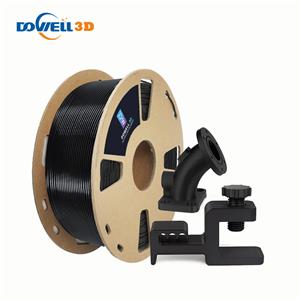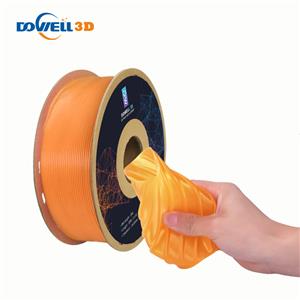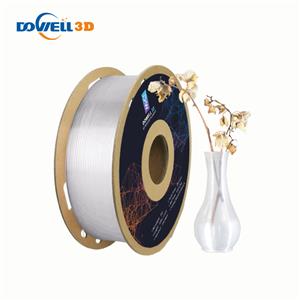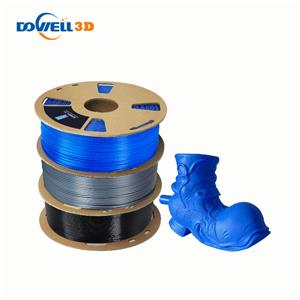What is the filament FDM 3d printing?
What is the Filament FDM 3d printing printer?
FDM 3d printing is the most popular 3D printing technology. Learn all you need to know about it and how it compares to other methods.
Fused deposition modeling, or FDM for short, is a material extrusion method of additive manufacturing where materials are extruded through a nozzle and joined together to create 3D objects, mostly common filament are including pla filament, petg filament, carbon fiber filament, abs filament, asa filament, pla wood filament.
In particular, the “standard” FDM process distinguishes itself from other material extrusion techniques, A typical FDM 3D printer, therefore, takes a polymer-based filament and forces it through a heated nozzle, which melts the material and deposits it in 2D layers on the build platform. While still warm, these layers fuse with each other to eventually create a three-dimensional part by 3d printing filament.
HOW IT WORKS
FDM (or FFF) is mainly characterized by the extrusion 3d filament and selective deposition of thermoplastics into layers that build up to create a three-dimensional object. This may sound a bit vague, so let’s explore the process in more detail here.
At its core, the FDM technique is relatively straightforward. Its main functions are performed by two distinct systems: one responsible for the extrusion and deposition and the other for the printhead movement.
Extrusion &Deposition

Broadly speaking, the extrusion and deposition system can be split into two main assemblies: the “cold end” and the “hot end”. The thermoplastics used in FDM 3D printing often come in filament spools, and the cold end is responsible for feeding this material from the spool into the 3D printer. Like such, the cold end also controls the rate at which material is being deposited on the other end, often referred to as “flow”.
The hot end, on the other hand, is responsible for heating the moving plastic material to the point that it’s adequate for being “purged” through a nozzle, hence its name. This step involves different components, including heating cartridges, heatsinks, and of course, nozzles.
The cold and hot ends must work synergistically to extrude just the right amount of material at the required temperature and physical state for properly stacking up layers.
HOW IT COMPARES
FDM offers several advantages over other 3D printing methods, but it also has downsides. Let’s list its pros and cons regarding print performance and overall part quality compared to other popular 3D printing techniques.
Pros
Scalability is one of the most significant advantages of FDM 3D printing. Unlike resin 3D printers, FDM printers can be easily scaled to any size because the only constraint is the movement of each gantry.
One of the more obvious benefits of having an easily-scalable design is the cost-to-size ratio. Due to low part costs and the simple designs involved, FDM printers are continually being made bigger and less expensive.
Speaking of cost, regular FDM filaments are by far the cheapest 3D printing material, especially when compared to other 3D printing methods, such as SLS and resin-based printing.
Another advantage regarding materials is flexibility. On any FDM printer, a wide variety of thermoplastic materials and exotic filaments can be printed with relatively few upgrades and modifications, and this cannot be said of other styles where the material must be a resin or fine powder.
Cons
FDM 3D printing, however, is not without its shortcomings. Due to the simplicity and overall cost of its components, FDM printers often require a lot of tweaking and adjusting (namely bed leveling) to reach the level of reliability and quality of other printing methods.
In contrast to resin and SLS, FDM relies heavily on physical movement. As result, in addition to calibration, many FDM printer components require regular maintenance, and attention: belt tension, extruder cleaning, rail lubrication, and even part replacement like hot end nozzles.
Lastly, FDM printing is highly dependent on feedstock material quality. Poor dimensional accuracy in a filament can lead to several extrusion issues, and the chemical composition of the plastics can also make the printing process problematic. In addition, filament spools must be stored appropriately to avoid humidity absorption – which also affects the printing process




